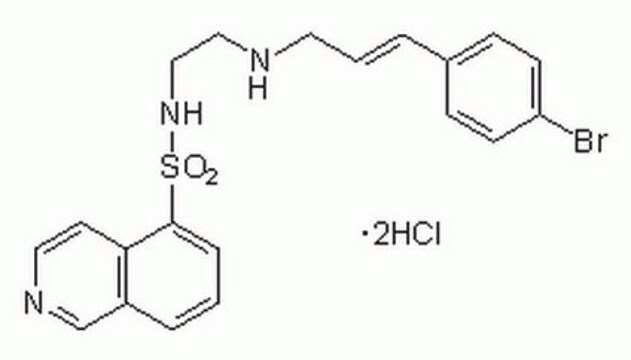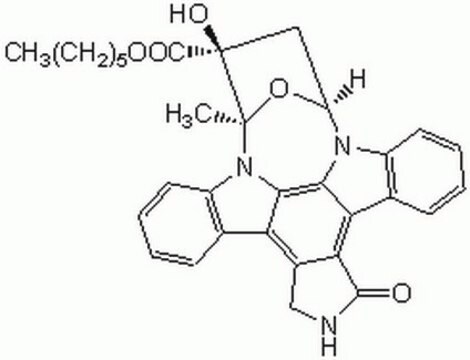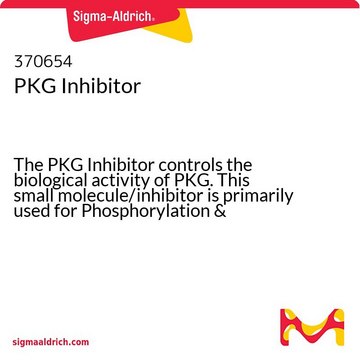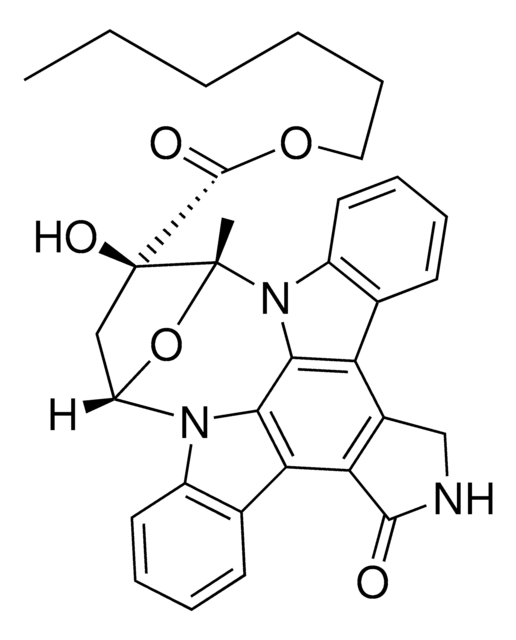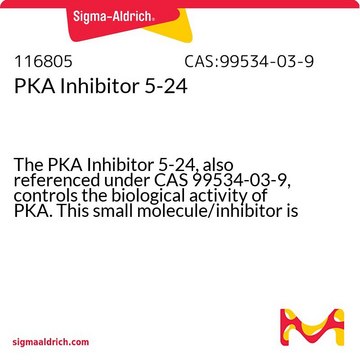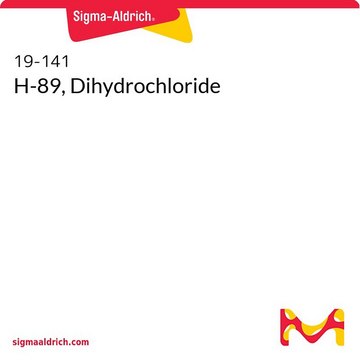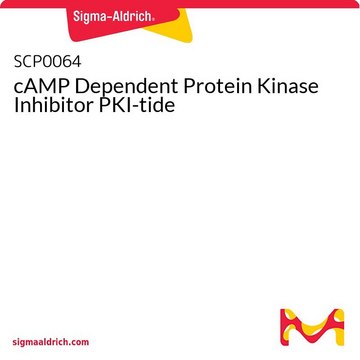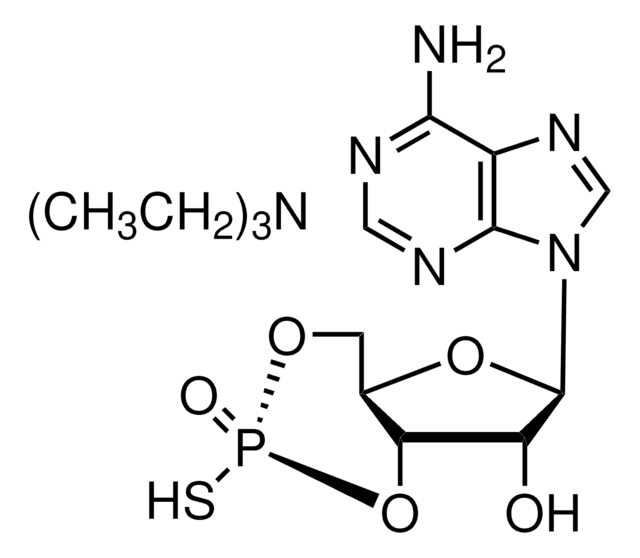371962
H-89, Dihydrochloride
InSolution 10 mM, ≥99%, reversible ATP-competitive inhibitor of protein kinase A
Synonym(s):
InSolution H-89, Dihydrochloride, N-[2-(( p-Bromocinnamyl)amino)ethyl]-5-isoquinolinesulfonamide, 2HCl, PKA Inhibitor III, N-[2-((p-Bromocinnamyl)amino)ethyl]-5-isoquinolinesulfonamide, 2HCl, PKA Inhibitor III
About This Item
Recommended Products
Quality Level
Assay
≥99% (HPLC)
form
liquid
manufacturer/tradename
Calbiochem®
storage condition
OK to freeze
protect from light
shipped in
wet ice
storage temp.
−20°C
General description
Biochem/physiol Actions
PKA
Packaging
Warning
Physical form
Reconstitution
Other Notes
Davies, S.P. et al. 2000. Biochem. J.351, 95.
de Rooij, J., et al. 1998. Nature.396, 474.
Kawasaki, H., et al. 1998. Science.282, 2275.
Findik, D., et al. 1995. J. Cell. Biochem.57, 12.
Hidaka, H., and Kobayashi, R. 1992. Annu. Rev. Pharmacol. Toxicol.32, 377.
Geilen, C.C., et al. 1992. FEBS Lett.309, 381.
Chijiwa, T., et al. 1990. J. Biol. Chem.265, 5267.
Combest, W.L., et al. 1988. J. Neurochem.51, 1581.
Legal Information
Storage Class Code
10 - Combustible liquids
WGK
WGK 1
Flash Point(F)
188.6 °F - closed cup - (Dimethylsulfoxide)
Flash Point(C)
87 °C - closed cup - (Dimethylsulfoxide)
Certificates of Analysis (COA)
Search for Certificates of Analysis (COA) by entering the products Lot/Batch Number. Lot and Batch Numbers can be found on a product’s label following the words ‘Lot’ or ‘Batch’.
Already Own This Product?
Find documentation for the products that you have recently purchased in the Document Library.
Our team of scientists has experience in all areas of research including Life Science, Material Science, Chemical Synthesis, Chromatography, Analytical and many others.
Contact Technical Service
